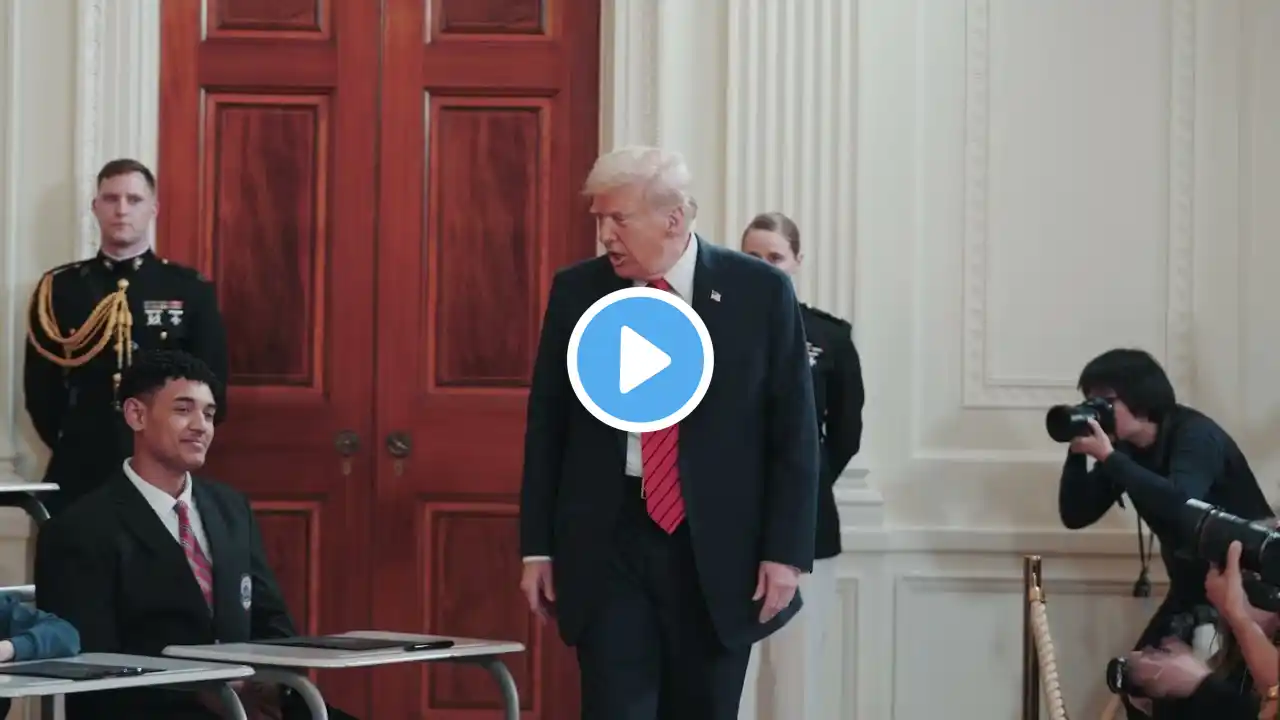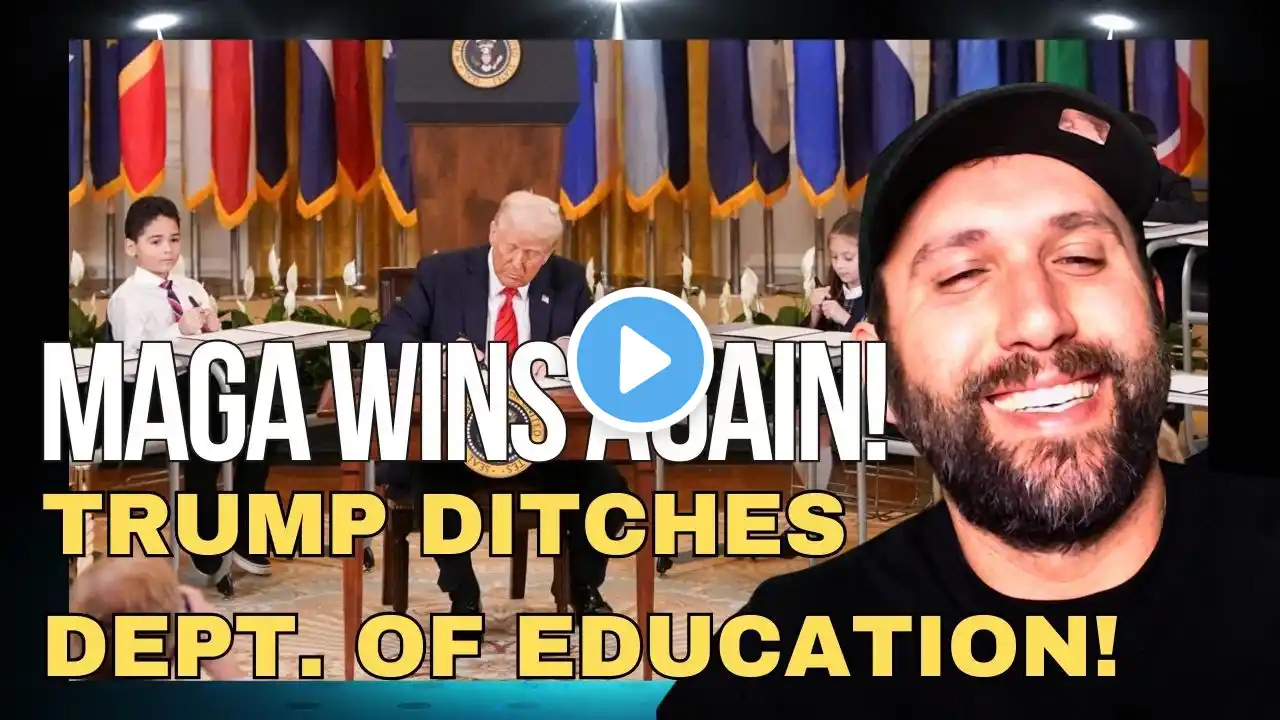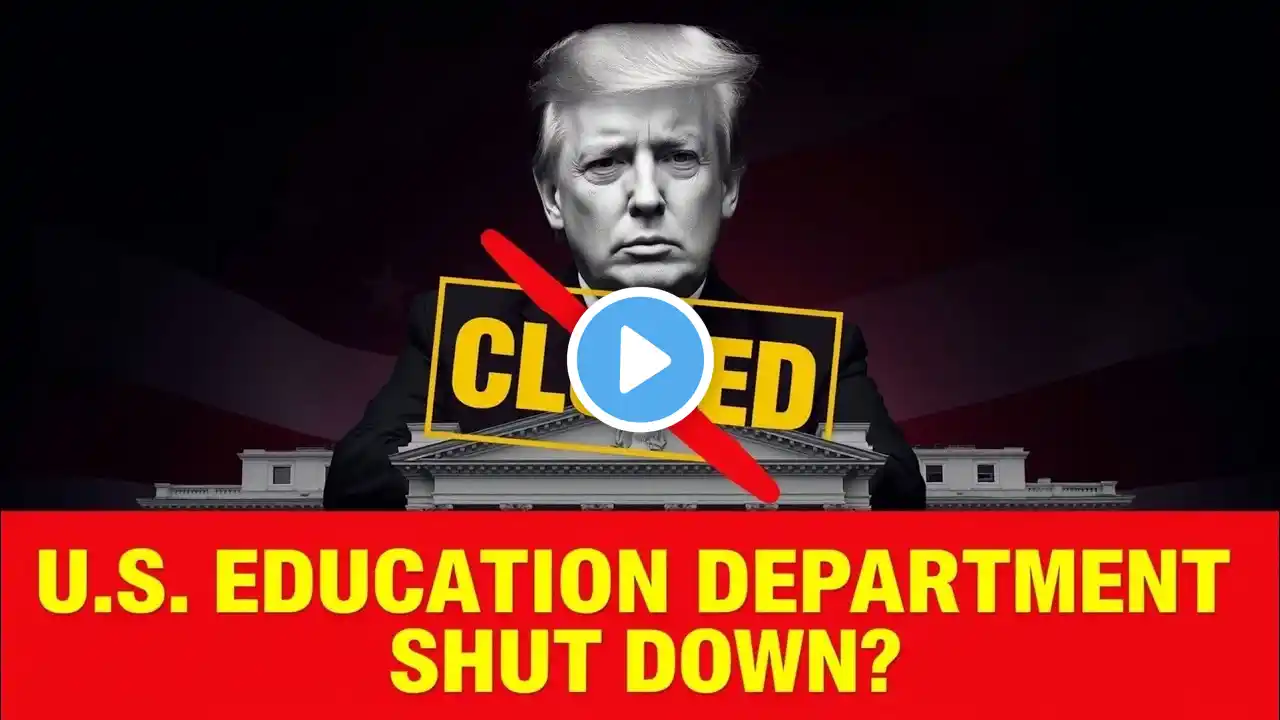
Trump Moves to Abolish the Department of Education: What It Means for America
Today, we bring you a crucial update on the American education landscape. President Donald Trump has signed an executive order aimed at dismantling the U.S. Department of Education. This move marks a significant step toward fulfilling a campaign promise and a long-standing goal for many conservatives. What Does the Executive Order Entail? The executive order directs Education Secretary Linda McMahon to take all necessary steps to facilitate the closure of the Department of Education and return educational authority to the states. The White House has stated that the goal is also to ensure the "uninterrupted delivery of services, programs, and benefits that Americans rely on." Key Functions of the Department of Education: It is important to recognize the critical role the Department of Education currently plays: Oversees a federal student loan portfolio of $1.6 trillion. Provides funding to low-income students. Enforces civil rights laws in education nationwide. Distributes crucial financial aid and grant programs. Ensures equity in access to and quality of education across the U.S.. Collects national education data. Manages federal grants for K-12 education, including Title I funding for high-poverty schools. Helps fund schools in low-income areas. Administers programs for students with disabilities (IDEA). Oversees Pell Grants for college students. Funds and disseminates educational research. Administers tests that track American student performance. Implications and Concerns: The potential closure of the Department of Education raises several concerns: Student Loans Impact: Hundreds of thousands of students and graduates are uncertain about the future of their debt. Some suggest this responsibility may shift to the Treasury Department, which lacks expertise in higher education regulations. School Funding Disruptions: The halt of K-12 funding programs could have severe consequences, particularly for low-income schools and students with disabilities. Civil Rights Enforcement: The department’s abolition could weaken enforcement of student civil rights protections. Decentralization and State Control: While the order aims to return educational authority to states, some fear it may lead to inequalities in education as state resources and priorities vary. DEI and Gender Ideology Programs: The order stipulates that any remaining Department of Education funds should not support diversity, equity, and inclusion (DEI) initiatives or gender ideology programs. Legal and Political Hurdles: It is important to note that only Congress can unilaterally eliminate the Department of Education. An executive order alone cannot dissolve a federal department created by congressional legislation. Congressional Approval Required: The department’s abolition would necessitate congressional action, likely requiring 60 Senate votes to overcome a Democratic-led filibuster. Republicans currently hold a 53-47 majority, falling short of the threshold. Legal Challenges: Any attempt to bypass Congress would likely face legal challenges. A federal judge previously blocked a similar effort to dismantle the U.S. Agency for International Development. Democratic Opposition: Democrats have strongly opposed the order, calling it "dangerous and illegal" and pledging to fight it in court and on Capitol Hill. Reactions and Outlook: Supporters: Trump’s supporters welcome the order, arguing that it will empower parents, states, and communities in controlling education. They view the Department of Education as a waste of taxpayer money and federal overreach into local decision-making. Critics: Opponents argue that dismantling the department would leave millions of children behind, particularly those in underprivileged and rural communities. They fear it will weaken public education, abandon civil rights enforcement, and prioritize corporate interests over the right to quality education. Next Steps: While fully abolishing the department requires congressional action, the Trump administration can "starve the agency of resources" and reduce its size and influence within legal limits. This is already underway with staff layoffs and program funding cuts. Secretary McMahon even sent an internal email to staff describing their mission as their "final mission." Conclusion: Trump’s executive order represents a bold attempt to reshape the federal education system. However, his ability to fully dismantle the Department of Education is severely constrained by the need for congressional approval and anticipated legal challenges. In the coming months and years, we expect intense political battles and potential lawsuits that will determine the federal government's role in American education. Sources: CNBC, AXIOS, Global News, MSNBC, Salon.com, El Pais, France24, The Guardian, CNET Technology News, Open, Il Post, New York Times, South China Morning ...


















